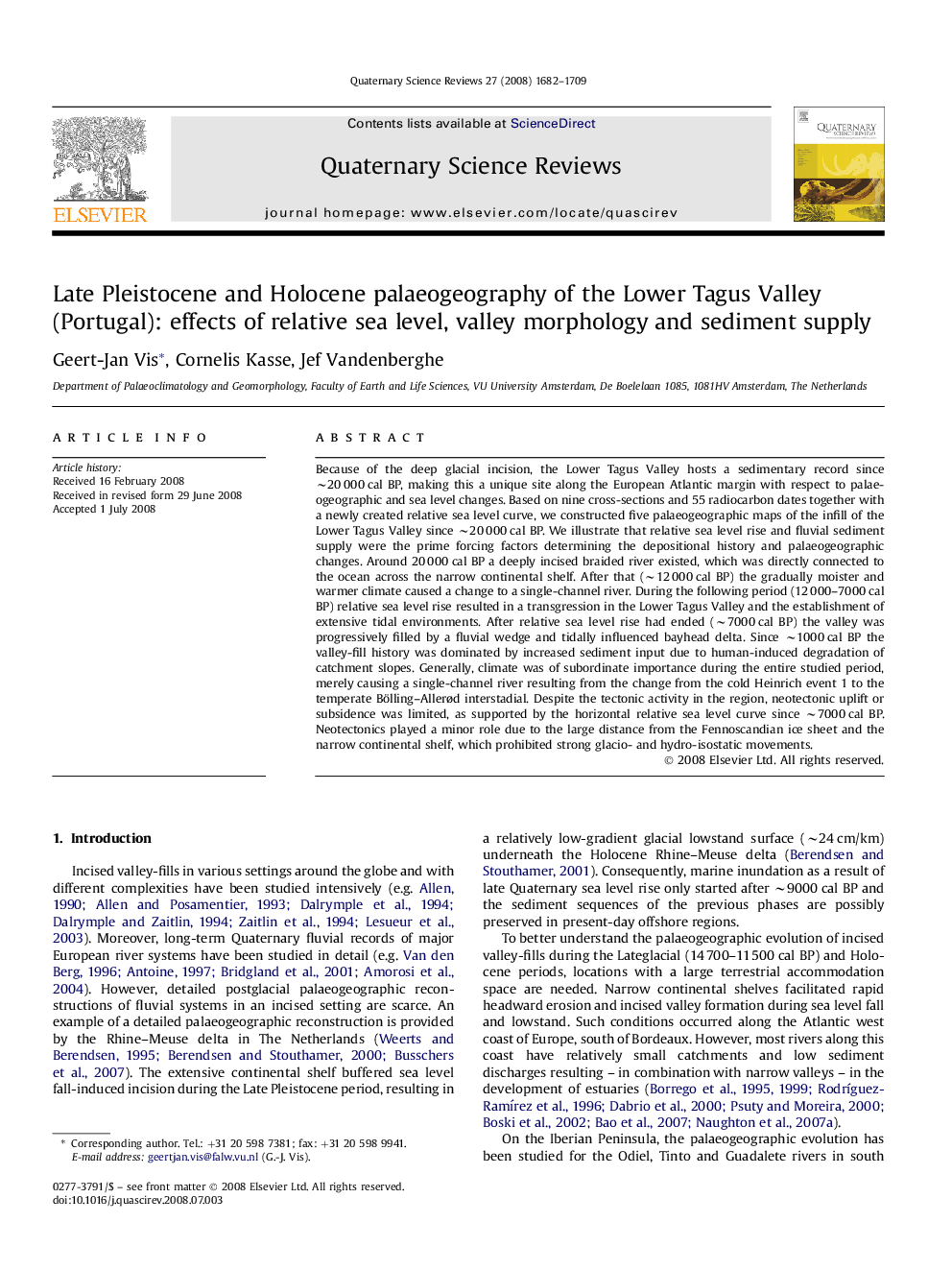| کد مقاله | کد نشریه | سال انتشار | مقاله انگلیسی | نسخه تمام متن |
|---|---|---|---|---|
| 4736121 | 1640951 | 2008 | 28 صفحه PDF | دانلود رایگان |

Because of the deep glacial incision, the Lower Tagus Valley hosts a sedimentary record since ∼20 000 cal BP, making this a unique site along the European Atlantic margin with respect to palaeogeographic and sea level changes. Based on nine cross-sections and 55 radiocarbon dates together with a newly created relative sea level curve, we constructed five palaeogeographic maps of the infill of the Lower Tagus Valley since ∼20 000 cal BP. We illustrate that relative sea level rise and fluvial sediment supply were the prime forcing factors determining the depositional history and palaeogeographic changes. Around 20 000 cal BP a deeply incised braided river existed, which was directly connected to the ocean across the narrow continental shelf. After that (∼12 000 cal BP) the gradually moister and warmer climate caused a change to a single-channel river. During the following period (12 000–7000 cal BP) relative sea level rise resulted in a transgression in the Lower Tagus Valley and the establishment of extensive tidal environments. After relative sea level rise had ended (∼7000 cal BP) the valley was progressively filled by a fluvial wedge and tidally influenced bayhead delta. Since ∼1000 cal BP the valley-fill history was dominated by increased sediment input due to human-induced degradation of catchment slopes. Generally, climate was of subordinate importance during the entire studied period, merely causing a single-channel river resulting from the change from the cold Heinrich event 1 to the temperate Bölling–Allerød interstadial. Despite the tectonic activity in the region, neotectonic uplift or subsidence was limited, as supported by the horizontal relative sea level curve since ∼7000 cal BP. Neotectonics played a minor role due to the large distance from the Fennoscandian ice sheet and the narrow continental shelf, which prohibited strong glacio- and hydro-isostatic movements.
Journal: Quaternary Science Reviews - Volume 27, Issues 17–18, September 2008, Pages 1682–1709